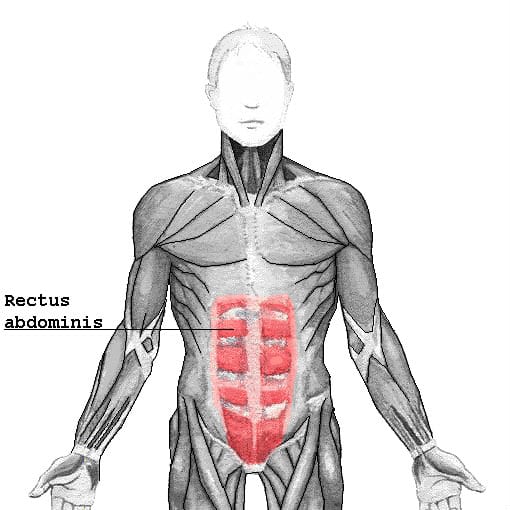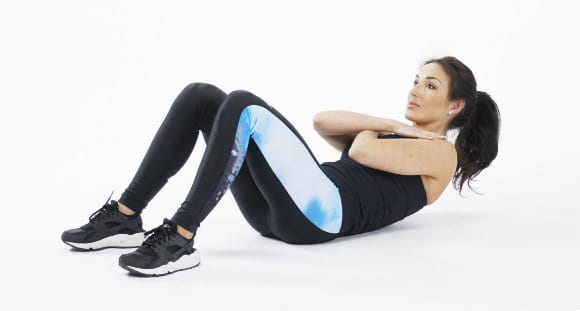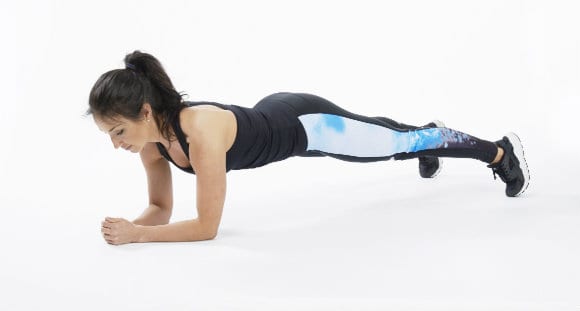How to do your abs?
One of the most trained muscles in the gym is the rectus abdominis. A sculpted abdomen is the main reason for having a perfect body to show off!
There are countless exercises to train this muscle - but are we sure we're doing it right?
Discover the workout routine:
A Little About Anatomy
The abdominal band is made up of the following muscles.
? Rectus abdominis: single large muscle that originates from the ribs and inserts into the pubis; therefore the purpose of the rectus abdominis is to reduce the space or to bring these two points closer to each other.
The oblique muscles also participate synergistically in this movement; in the case of simultaneous approach of the two points we can speak of complete action.
 ? Upper (external) and lower (internal) oblique: the main functions of these muscles are: trunk flexion, lateral and ipsilateral inclination, ipsilateral and contralateral rotation and, finally, lowering of the rib.
? Upper (external) and lower (internal) oblique: the main functions of these muscles are: trunk flexion, lateral and ipsilateral inclination, ipsilateral and contralateral rotation and, finally, lowering of the rib.
? Transverse: several studies show its importance as a stabilizing muscle of the pelvis and pelvic floor. It is a muscle that must be voluntarily activated. An excellent muscle tone of the transverse muscles reduces the circumference of the waist, otherwise there will be a situation of abdominal swelling.
As already explained it is important to remember that the rectus abdominis is a single large muscle where there are several tendon intersections; therefore making a distinction between upper abdomen and lower abdomen is not entirely correct.
While performing some exercises you can talk about muscle emphasis but not complete muscle isolation.
Due to its structure, the movements that allow excellent muscle activation are those of approach of the pelvis to the bust and vice versa; so in exercises where there is no movement of the point of origin or intersection it is better to speak of isometric contractions.
How to train them? General principles
The most common mistake when it comes to ab workout is to believe that the more you do, the more weight you lose. Wrong concept: Doing a large number of abdominals does not increase weight loss or reduce abdominal fat!
The ideal is to train your abs from 2 to 3 times a week, even beyond, for a professional athlete who needs preparation.
Also the advice is to alternate training sessions where you start with the obliques of the abdomen, and others where you start with the rectus abdominis, starting with the crunch as the first exercise.
Another mistake that is frequently made when training abs is perform the barbell twist or rotations for the abdominal obliques, believing that the isolation of the obliques is greater than exercises such as lateral inclinations, hell touches, or mat obliques.
The main problem with this exercise is that rotations can lead to inflammation at the level of the lumbar vertebrae with consequent onset of pathologies. So, the advice I can give is to favor exercises that engage the body with lateral inclinations rather than with rotations.
How to train them? Specific Exercises
Let's now explain the main exercises to be performed for the development of the abdominal muscles, the correct executions and the main mistakes made:
Crunch
Complementary exercise; the muscles that are mainly involved are:
- rectus abdominis, obliques and abdominal transversus.
For a correct execution, lie on your back on an exercise mat or on the appropriate bench, lower limbs bent and resting on the bench. Lift the shoulders off the ground in order to bring the chin closer to the pelvis without detaching the lumbar band or the subscapular area.
The most common mistakes in performing the exercise are:
- pull the neck when lifting;
- arch the lumbar spine by performing a momentum;
- detach lumbar tract from the ground;
- perform the momentum movement.

Reverse crunch
complementary exercise; the muscles mainly involved are:
- rectus abdominis, oblique and transverse.
For correct execution, lie down on your back on an exercise mat or on the appropriate bench, lower limbs slightly flexed. Perform oscillations with the lower limbs, reach 45 ° with the thighs, return to the starting position by slightly lifting the sacrum area.
The most common mistakes in performing the exercise are;
- fully lift the lumbar belt off the bench;
- perform the momentum exercise;
- reach with the legs over 45 ° of slope.
Sit ups
complementary exercise; the muscles mainly involved are:
- rectus abdominis, obliques and transverse abdominis.
For a correct execution assume the same position of the crunch, better if performed with free feet; in this way there is no excessive activation of the psoas.
Slowly raise the head first, then the shoulders, then the scapular area and finally the lumbar area, imitating the movement of a roll-up.
It is essential to start in the position of maximum strech, that is with the back completely adherent to the ground without interrupting the abdominal contraction; lift the torso up to approximately 80/90 °: do not arrive with the torso perpendicular to the ground as this would interrupt the tension; return to the starting position by unrolling first the lumbar area, then the scapular, then the shoulders and finally the head.
The most common mistakes in performing the exercise are:
- start above the point of maximum strech;
- detach the various areas of the back in the wrong sequence;
- not lifting the torso sufficiently;
- perform the momentum movement;
- arch your back excessively.
Conclusions And Final Advice
For a beginner it is recommended to start training the abdomen gradually, that is:
- 2/3 series of 10 to 30 repetitions, recovery times between 45 ”and 1 '.
then you can go to:
- 4/5 series up to a maximum of 50 repetitions recoveries between 10 "and 30" (also 1 'depending on the training cycle).
For a more experienced athlete they can add overloads, particular training techniques such as super series, tri-sets, variations to classic exercises.
If the goal is to achieve good weight loss in the abdominal area, you can use a workout in “Spot Reduction” (or SR), or insert the abdominal training into a circuit with aerobic machines, for example:
- 5 ′ treadmill, bike, elliptical;
- bench crunch x50;
- reverse on bench x50;
- oblique mat x50;
- 5 ′ running, treadmill, bike, elliptical.
Repeat the whole circuit 2/3/4 times.
However, it is essential contact a professional that you plan an effective workout, which brings maximum benefits, with excellent timing.



























